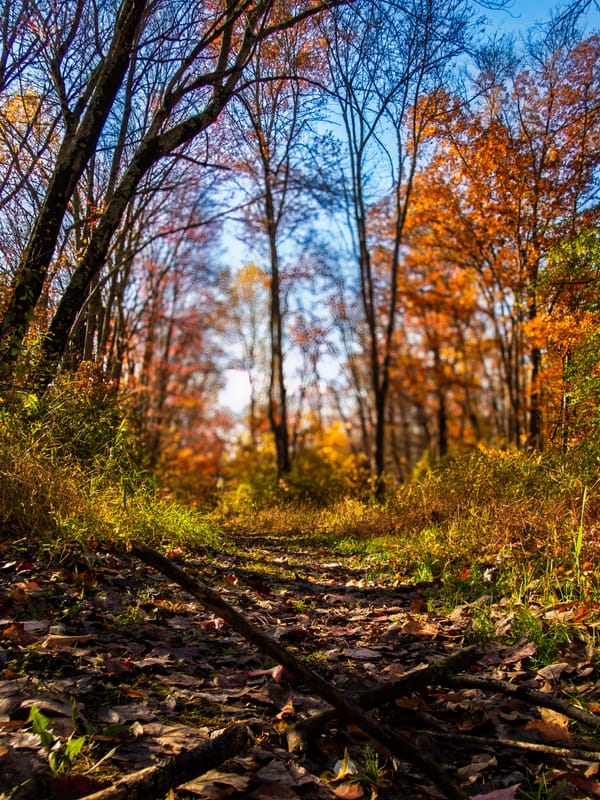The Last Flowers of the Year
Keep your eyes open and you may catch a flash of yellow that is among the latest woodland blooms in Nixon Park this year. While maples and hickories are letting go of their last leaves, witch hazel reveals its strange yellow threads of unexpected color.
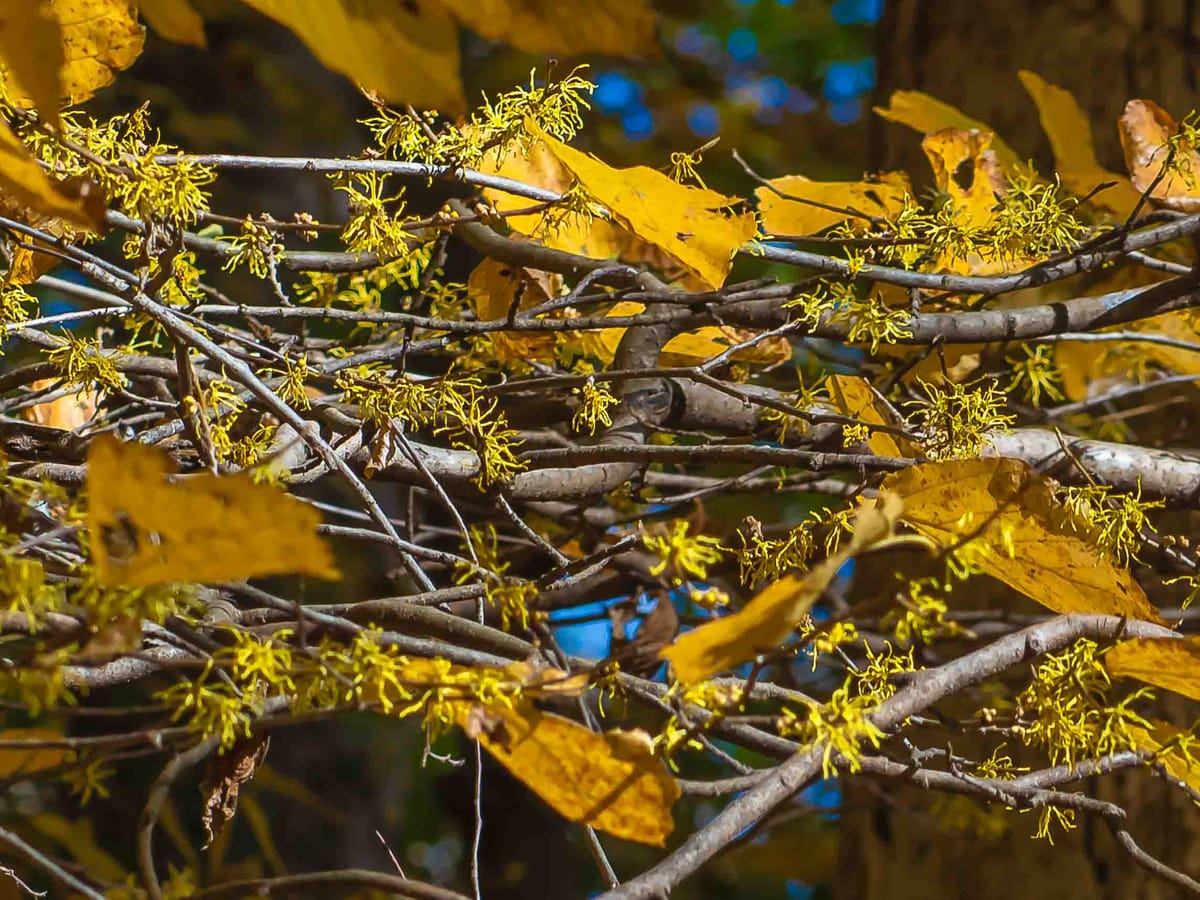
Keep your eyes open and you may catch the latest woodland blooms in Nixon Park this year. While maples and hickories are letting go of their last leaves, witch hazel reveals its strange yellow threads of unexpected color.
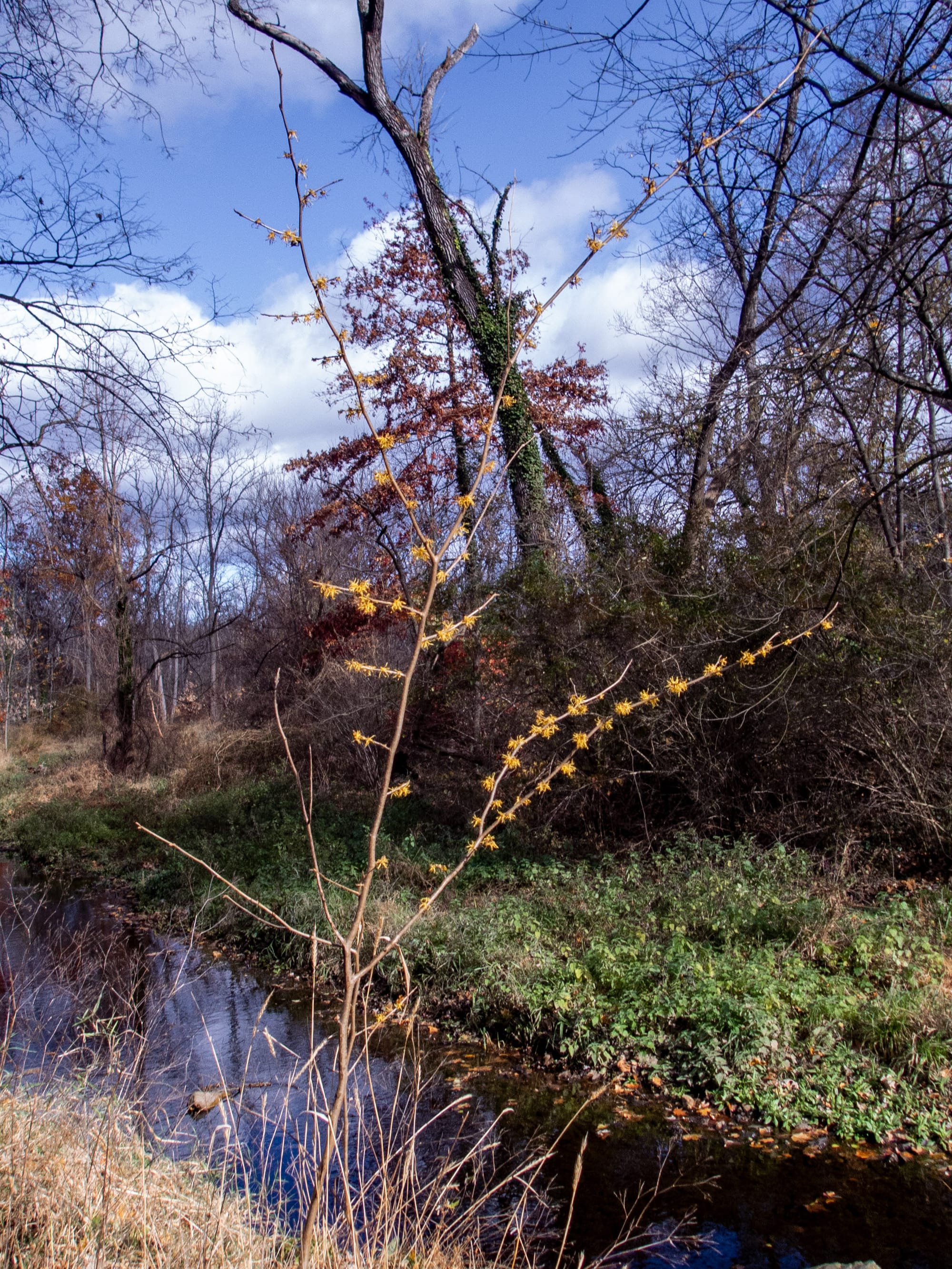
Witch hazel flower buds have been resting since they formed during the previous growing season. Once the leaves are off they bloom and attract pollinators like winter moths and the few hardy flies that remain active into early winter.
Witch hazel gains an evolutionary advantage by flowering during a time with fewer competing blossoms. Adapted for cold weather the long ribbony petals will roll up tight to survive frosty nights.
The pollenated flowers become seed capsules that develop and mature throughout the coming year to eject seeds in late summer to fall.


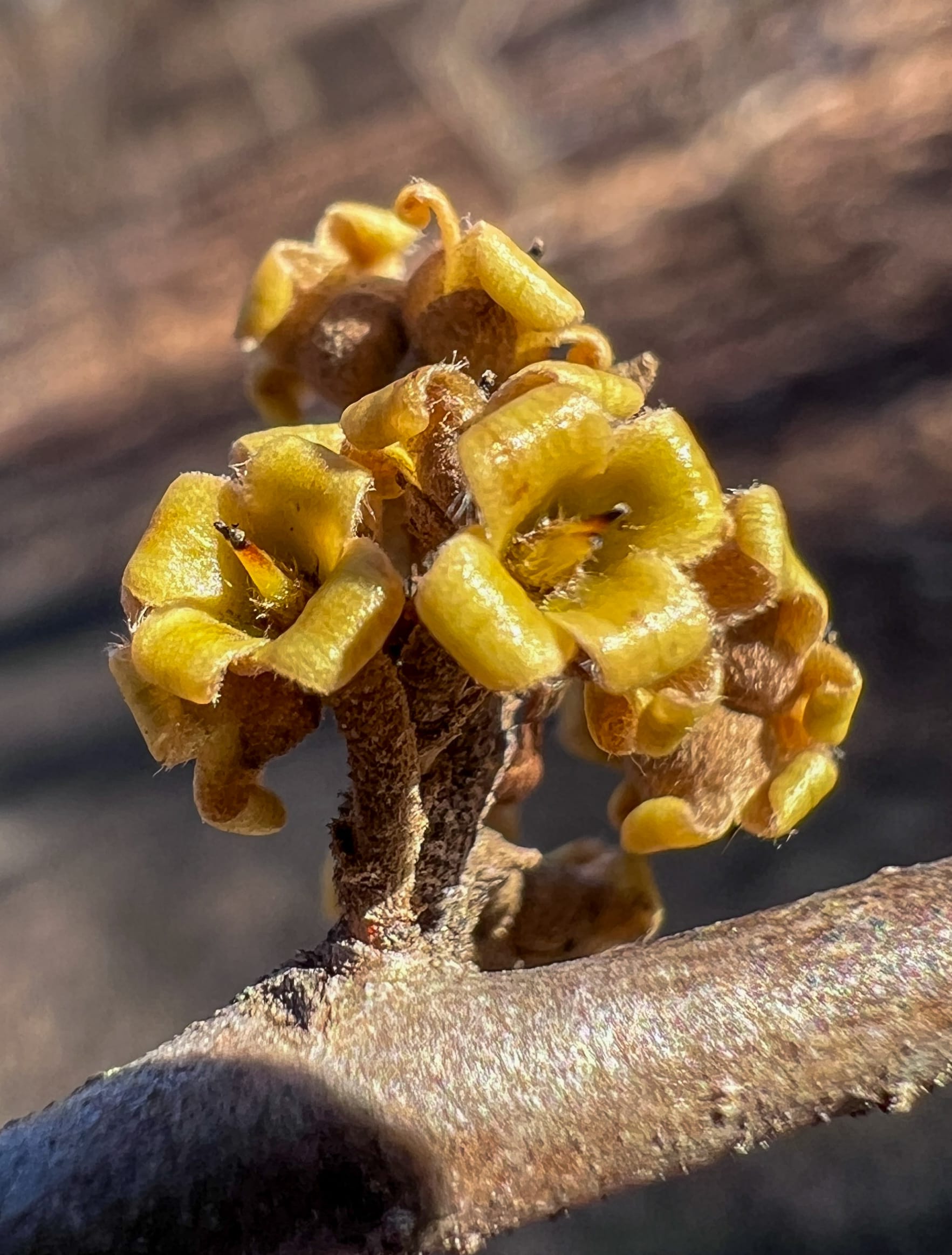
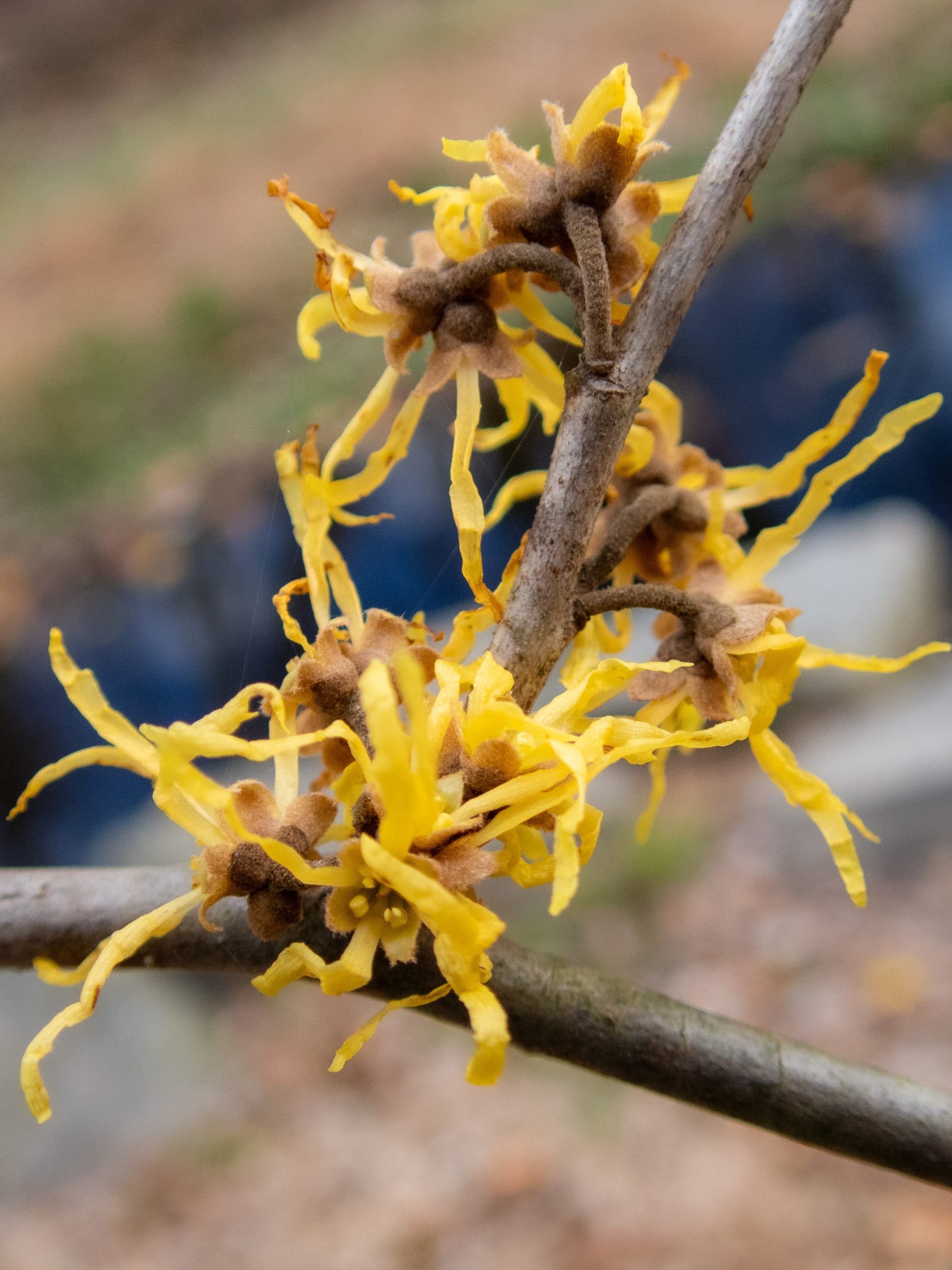


Witch hazel hosts a specialized aphid, Hamamelistes spinosus. In spring, the overwintering eggs hatch and the young insects begin feeding on the sap in the soft developing bud and leaf tissues. Chemicals introduced while they feed redirect normal growth and form the spiny galls, which grow around the aphids as they develop. Later in summer mature aphids leave the galls and lay the overwintering eggs on the twigs and buds of the witch hazel, where they remain until hatching the following spring.


